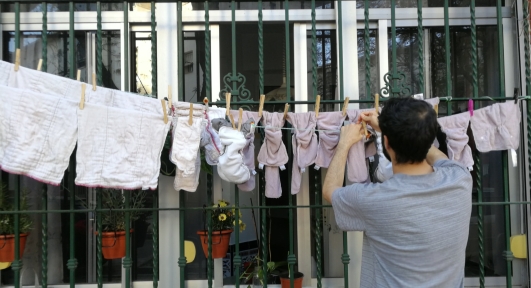Indigo is six weeks and our “cuarentena” has officially ended. In some ways, it feels like the beginning of a new chapter in our family dynamic, but also very much the same. After all, there’s only so much I can do one-handed or while breastfeeding!
I have to say that so far the transition from one to two children has been a lot easier than anticipated. Admittedly, I’m not the one washing dishes or walking the dog, but our day to day hasn’t been bad at all. Zero to one rocked our world in unimaginable ways, and lessons were learned. Knowing what to expect in terms of newborn needs, exhaustion, and overall recovery from birth helped us approach this postpartum period better prepared. Even though this experience has been easier, lying in for forty days with a four year old and minimal extra help is a lot, too much even. But that’s a post for another day.
Some time has passed and we’ve officially been back in diapers for over a month now, and I thought I’d share a little on how it’s going. We originally planned to use disposables for the first few days to avoid meconium stains, but they ended up being way too big and unnecessary. It turns out that while meconium is a pain to wipe off a baby’s bum, it doesn’t stain at all.
The first two weeks were a breeze. The newborn flats we bought worked well, but at three weeks or so the baby began to out-wet the absorbency and to outgrow the folds. We had to pad fold the flats, which I don’t recommend because it doesn’t contain explosive newborn poo. My partner shrunk a wool cover (!), and Indigo was flying through our 24 diapers.
We ended up buying an additional 12 prefolds, doubling flats (and pad-folding them when poo was off the forecast), and adding slightly-too-big fitted diapers in the rotation to remedy our issues. As of now we have 31 diapers to work with, and it seems to be working. I hope this solution can hold us over until the baby is big enough to fit into our one-size stash, but we’ll see.
Setbacks do happen, but fortunately most issues have simple fixes and don’t require too much brainpower. Despite our hiccups, I’m happy with how things are going and excited to continue with cloth.







